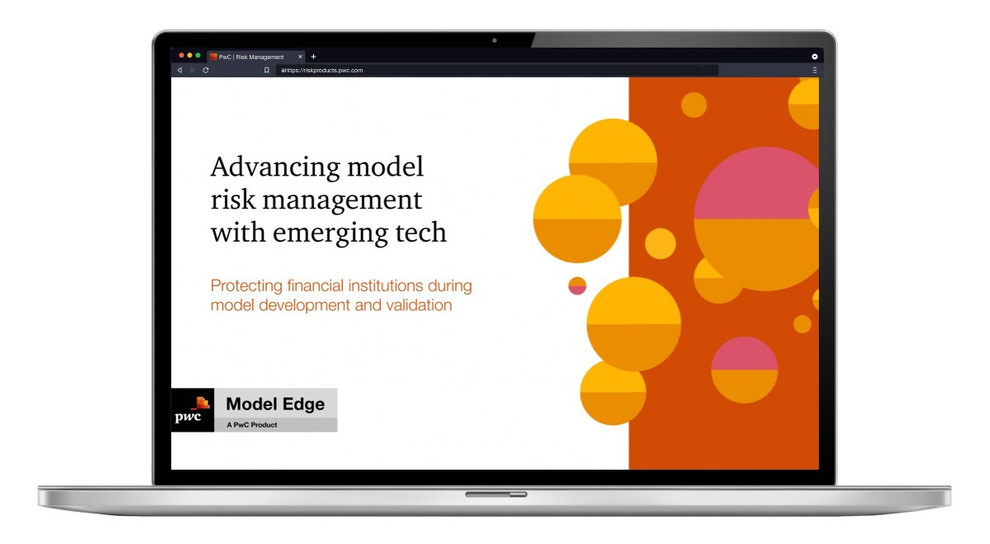INSIGHT - 8 min read
Improving financial crime programs with AI
How to help implement effective models
Even the less tech savvy among us might admit: Technology has improved our lives. It has allowed us to easily collaborate across continents. Mere keystrokes pull up vast amounts of information. Tasks that would have taken hours, now take minutes.
But along with the good comes challenges. Technology can also create more opportunities for financial crimes, such as money laundering, online fraud and cybercrime.
One way to help manage the financial crime wrought by technology? Leverage top-of-the-line technology. Artificial intelligence (AI) can be especially helpful. But you can’t just flip a switch and begin, AI requires thoughtful implementation. Luckily, the process is manageable with the proper frameworks. By incorporating AI into financial crime modeling programs with transparency, precision, and appropriate governance, organizations can better combat financial crimes while creating a more secure and resilient financial system.
Financial fact
We may think of financial crimes as primarily a modern problem, and the tech-based crimes we see today certainly are. However, Sarah Wilson, author of The Origins of Modern Financial Crime: Historical Foundations and Current Problems in Britain, found financial crimes go back as far as the Victorian era. An early financial misconduct criminal trial involving the railway and banking industries occurred in the 1850s.
Know your acronyms
In the United States, the Money Laundering Control Act of 1986 was a pivotal event that criminalized money laundering and established penalties for perpetrators. To combat money laundering and terrorist financing, the intergovernmental organization Financial Action Task Force (FATF) was formed in 1989.
Around this time, the term "anti-money laundering" (AML) emerged to describe the regulations implemented to prevent and detect money laundering activities. Additionally, the FATF developed recommendations and standards that became known as know your customers (KYC) measures.
Pain points for financial crime prevention
Gone are the days where financial crime prevention meant pouring over paper-based records, bank statements and checks. The work today may not be as tedious as it once was, but many would argue it’s more challenging. The digital age has created more opportunities for financial criminals, who can more easily remain anonymous. Since technology is always evolving, so are the methods of exploiting financial system vulnerabilities. Financial criminals can adapt readily and quickly to changing environments.
That means financial crime prevention pros should adapt just as quickly to manage potential threats — all while managing a growing volume of digital data. That data provides its own challenges, being often inconsistent in quality and format. Plus, all this needs to be accomplished within the parameters of ever-changing financial crime regulations and reporting requirements.
In short, there can be more work, more risk and more room for error. This can make the field of financial crime prevention all the more important — and all the more challenging.
Frankly, the financial industry needs to be more efficient in solving [financial crime] problems, and AI is a primary tool for getting there."
Michael Lammie
Partner, Financial Crimes Unit at PwC
How AI can help
You’d be hard-pressed to fight tech-savvy criminals without using advanced tech yourself. AI technology is especially useful as a front line in fighting financial crime.
Artificial intelligence can be adept at helping streamline and expedite otherwise manual processes. But it shouldn’t work alone. Humans provide oversight, context and institutional knowledge. Ideally, AI and employees work together to merge the efficiency of AI with the contextual understanding of employees.
Here are some examples of financial crime prevention tasks, the work AI can absorb and the human role with AI present.
AI can help increase productivity, reduce alert handle times and reduce costs, but it doesn’t understand its output. You need humans for that.
I don't think AI will completely replace anything that we're doing as humans, but it will be supporting data for you to make the right decision, and it will help get you there.”
Won Park
Partner, Financial Crimes Unit at PwC

GenAI Challenges
Hallucinations and bias aren’t just a human phenomenon. Yet humans are the source of both in AI.
If we provide AI biased data, it can produce biased, discriminatory results. The same goes for training it on false and misleading data—this can create “hallucinations,” an inaccurate output without a basis in reality.
The remedy? Humans. It’s our responsibility to carefully select data to input and then monitor the processing and results. Preferably, organizations also employ diverse AI development teams to help recognize and correct accidental bias as it appears.
Laying the groundwork for implementing AI
Unlike buying a car, where you get the keys, start the ignition and go, AI requires proper preparation before a test drive.
For starters, not everyone may be equally accepting of AI assistance. So, begin by getting the proper buy-in — and don’t stop with the most important suspects. Data scientists and leadership teams aren’t the only ones affected by AI implementation. Organizations should nurture interest in an array of teams, such as data, analytics, business, technology, advisory, operations, governance and model validation groups. Also, get regulators involved early to provide feedback on your AI approach.
In truth, you want your entire organization on board with AI, and transparency will be of the utmost importance to achieve that.
While buy-in may top the priority list, other elements are also key to successfully rolling out an AI integration. These include facilitating sufficient and accurate data to train your AI model, developing a data governance framework, building a skilled AI team, and investing in the necessary hardware and software.
Having everyone's input and buy-in is key to human success in AI programs.”
Won Park
Partner, Financial Crimes Unit at PwC
AI governance
Undoubtedly, AI prompts an array of governance questions. So, it’s important to establish a model risk management (MRM) process upfront to address the technical aspects of managing AI models. These protocols assist organizations in model development, validation, monitoring and maintenance while facilitating AI accuracy, reliability, and robustness. They can be particularly important to manage the intricacies of AI-powered models.
Manage your financial crime models with Model Edge
Model Edge, a PwC product, is a model risk management tool to help you manage and govern your financial crime prevention models. Here are examples of what Model Edge can do:
1. Streamline and govern your model lifecycle across all lines of defense.
2. Serve as your purpose-built model headquarters that handles everything from spreadsheets to AI.
3. Embed trust in your AI models by leveraging PwC’s Responsible AI framework built into Model Edge.
4. Help increase transparency with model centralization and automated orchestration.
5. Provide pre-built models backed by PwC’s extensive, real-world experience designed to enhance your model programs with industry-leading practices, saving time and resources.
In fact, Model Edge is a solution that encompasses data integration, preprocessing, model development, evaluation, deployment and monitoring.
A granular example of Model Edge use
A financial institution leverages Model Edge to integrate and preprocess various data sources, such as transaction data, customer information, and external data feeds.
They develop and evaluate fraud detection models using Model Edge's machine-learning capabilities.
They deploy these models into their operational systems through Model Edge and now monitor transactions in real-time.
The models generate alerts when detecting suspicious activities.
The financial institution tracks model performance over time using Model Edge's monitoring capabilities.
They iterate and improve models to enhance their effectiveness in preventing financial crime.
We need to be much more agile and digitized to demonstrate to regulators that we are able to monitor the risk, and we've got the audit trail and the evidence to prove it.”
Michael Lammie
Partner, Financial Crimes Unit at PwC
The future of Gen AI and the financial crime space
The financial space has already experienced massive change in the last twelve months as AI has become more prominent. Some organizations have even decommissioned legacy transaction monitoring systems in favor of new technologies. We should expect more of this in the next five years. AI monitoring-based solutions will likely become common in the financial crime space, and GenAI use should continue to grow too.
Smaller organizations may become bigger players with the level playing field AI helps create. Larger organizations used to have clear competitive advantages with teams of data scientists developing financial crime models. As AI becomes more commonplace, it lowers the cost of entry for smaller organizations. The focus shifts from a data science competitive advantage to the quality of the input information and the output results.
Keep in mind that while AI can be a game-changer for the financial crime space, quality employees remain important. Increasingly intelligent tech may power our solutions more, but only humans can lead the way.
There's no doubt in my mind that the industry is going to a place where deploying AI solutions becomes a de facto standard. How quickly that occurs is the key question.”
Michael Lammie
Partner, Financial Crimes Unit at PwC
Related insights for Model Edge


Explore our products
Stay read for new risks and remain compliant with products and technologies designed by industry experts — and built for your needs. Our consultants are here to help you keep your business protected and prepared so you can focus on what's next.
View products
